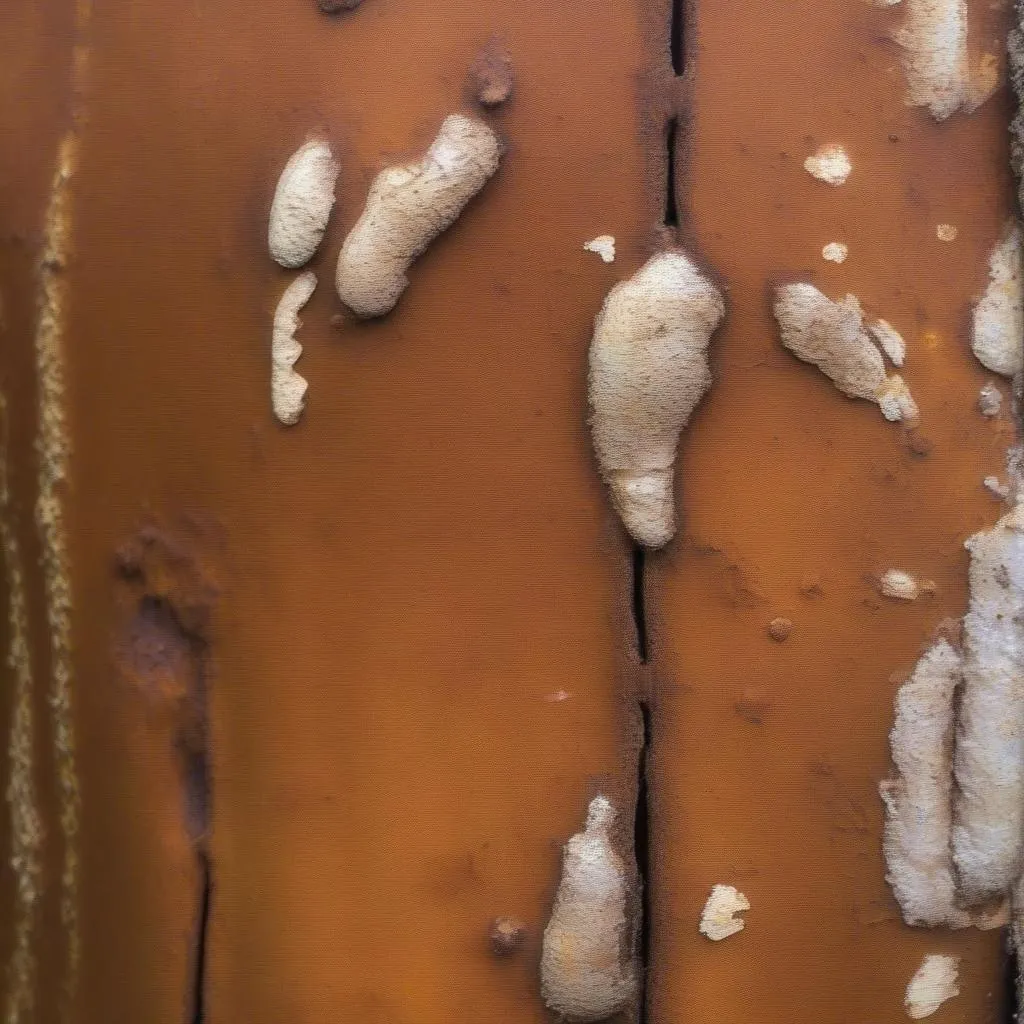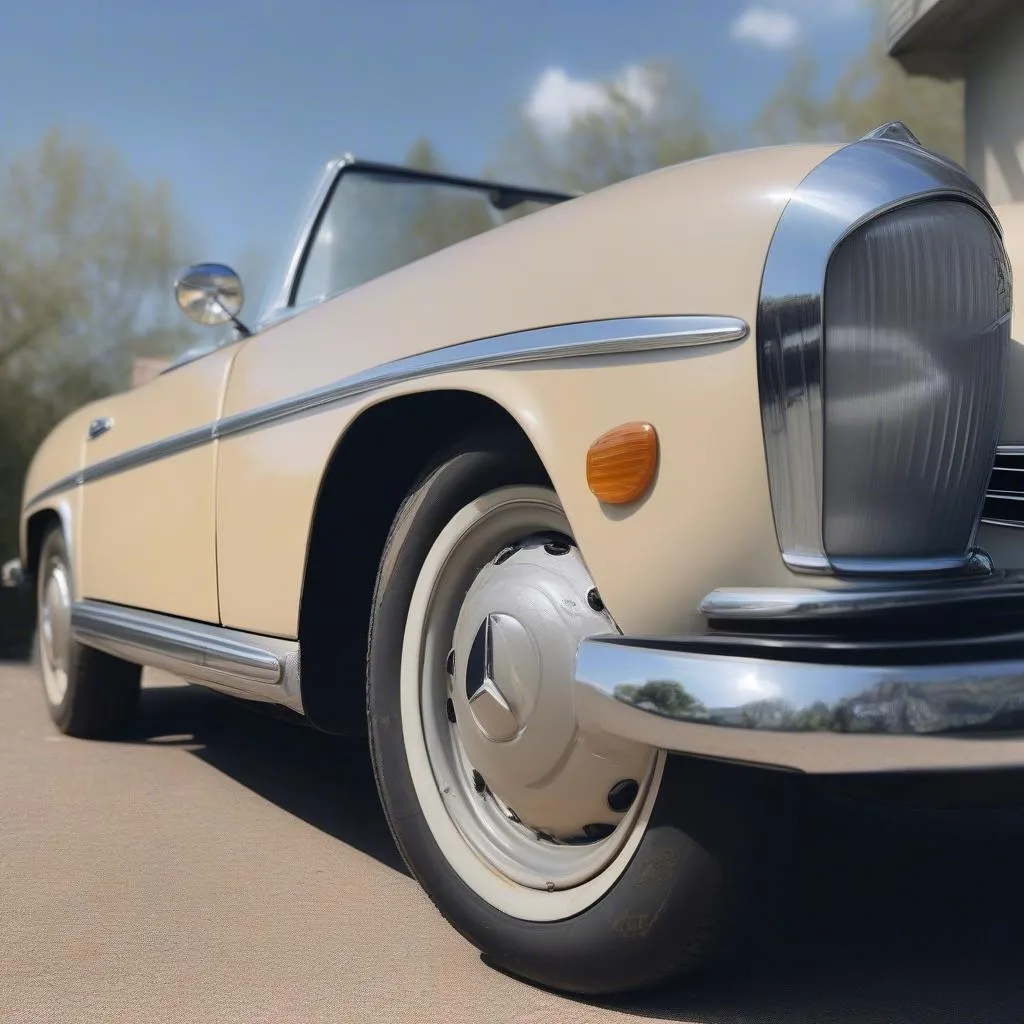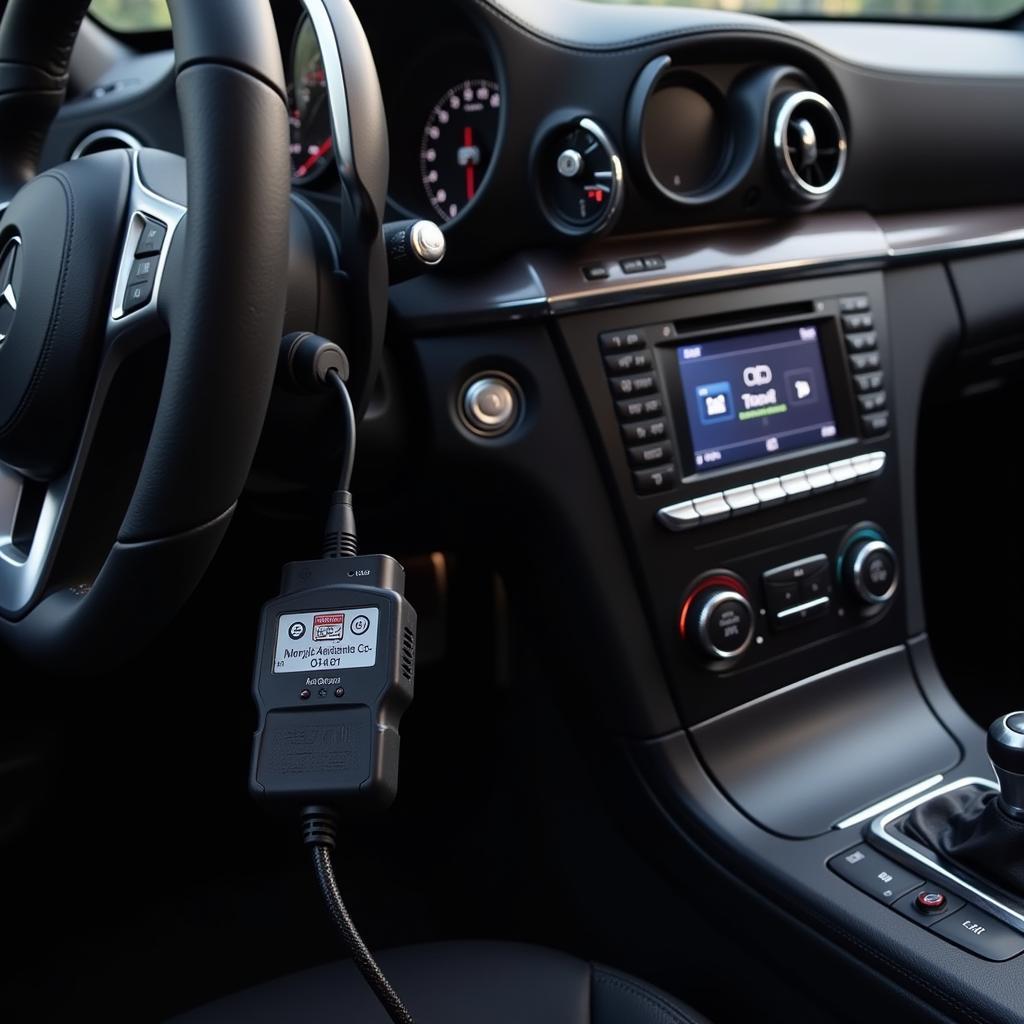A rusty front fender is a common problem on older vehicles like the 1983 Mercedes 240D. While this classic car is known for its durability, years of exposure to the elements can take their toll. Luckily, addressing the issue is achievable, even for DIY enthusiasts. This comprehensive guide will walk you through the steps to fix that rusty fender and get your 240D looking its best again.
Causes of a Rusty Front Fender
Before diving into the repair, it’s helpful to understand the usual suspects behind that unwelcome rust:
- Road Salt: If you live in an area that sees snow and ice, road salt can accelerate rust formation on your car’s undercarriage and fenders.
- Moisture: Water is rust’s best friend. Any area where water can collect, like behind the fender liner or in chipped paint, becomes a breeding ground for corrosion.
- Scratched or Chipped Paint: Damage to your car’s paint exposes the metal underneath, making it vulnerable to the elements and rust.
 Rusty Car Fender
Rusty Car Fender
Identifying the Extent of the Rust
The repair approach depends on how severe the rust is:
- Surface Rust: This appears as discoloration on the paint and can often be addressed with sanding and repainting.
- Scale Rust: This involves flaking or bubbling paint, indicating the rust has eaten deeper into the metal. It requires more extensive repair.
- Penetrating Rust: This is the most severe form, where the rust has eaten through the metal and created holes. It might require patching or even a complete fender replacement.
Tools and Materials You’ll Need
- Safety Gear: Gloves, safety glasses, and a dust mask are crucial.
- Sandpaper: Various grits, including 80, 120, 220, and 400.
- Rust Converter: This product chemically transforms rust into a paintable surface.
- Body Filler (Bondo): Use this to fill any holes or imperfections after sanding.
- Primer: Provides a good base for the paint to adhere to.
- Automotive Paint: Match the color of your 240D.
- Clear Coat: Protects the paint and provides a glossy finish.
- Masking Tape and Paper: To protect areas you don’t want to paint.
- Sanding Block: Helps you sand evenly.
- Paint Gun or Spray Cans: For applying primer and paint.
 Car Repair Tools
Car Repair Tools
Step-by-Step Repair Guide
- Prepare the Work Area: Park your Mercedes on a level surface with good ventilation.
- Remove the Fender (If Necessary): Depending on the severity of the rust, you might need to remove the fender entirely for better access.
- Clean the Area: Thoroughly wash the fender with soap and water to remove dirt and debris.
- Sand the Rust: Start with coarse grit sandpaper (80) to remove loose rust and paint. Gradually move to finer grits (120, 220) to smooth the surface.
- Apply Rust Converter (if needed): Follow the manufacturer’s instructions and apply it to any remaining rust. Allow it to dry completely.
- Fill Holes or Imperfections: Use body filler to address any remaining holes or low spots. Let it dry and sand it smooth.
- Mask Off the Area: Use masking tape and paper to protect surrounding areas from overspray.
- Prime the Surface: Apply several thin coats of primer, allowing each coat to dry completely.
- Sand the Primer: Once dry, use 400-grit sandpaper to lightly smooth the primer.
- Apply Paint: Apply several thin coats of automotive paint, allowing each coat to dry before the next.
- Apply Clear Coat: For extra protection and shine, apply a few coats of clear coat.
- Reinstall the Fender (If Removed): Carefully reattach the fender, making sure all bolts are properly tightened.
 Repaired Car Fender
Repaired Car Fender
FAQs About Rusty Car Issues
Q: Can I just paint over the rust?
A: While tempting, painting over rust won’t solve the problem. The rust will continue to spread under the paint, leading to more significant issues later on.
Q: My check engine light is on; could it be related to the rust?
A: It’s unlikely the rust is directly related to a check engine light. To diagnose the cause, you’ll need a reliable OBD2 scanner. Consider CARDIAGTECH’s range of professional-grade diagnostic tools for accurate readings and troubleshooting assistance.
Q: How can I prevent rust on my Mercedes?
A: Regular washing, especially during winter, helps remove road salt. Touch up paint chips promptly, and consider a rustproofing treatment for added protection.
Conclusion
Fixing a rusty front fender on your 1983 Mercedes 240D is a manageable task with the right tools, information, and a bit of patience. By addressing the issue promptly and taking preventative measures, you can keep your classic Mercedes looking its best for years to come.


